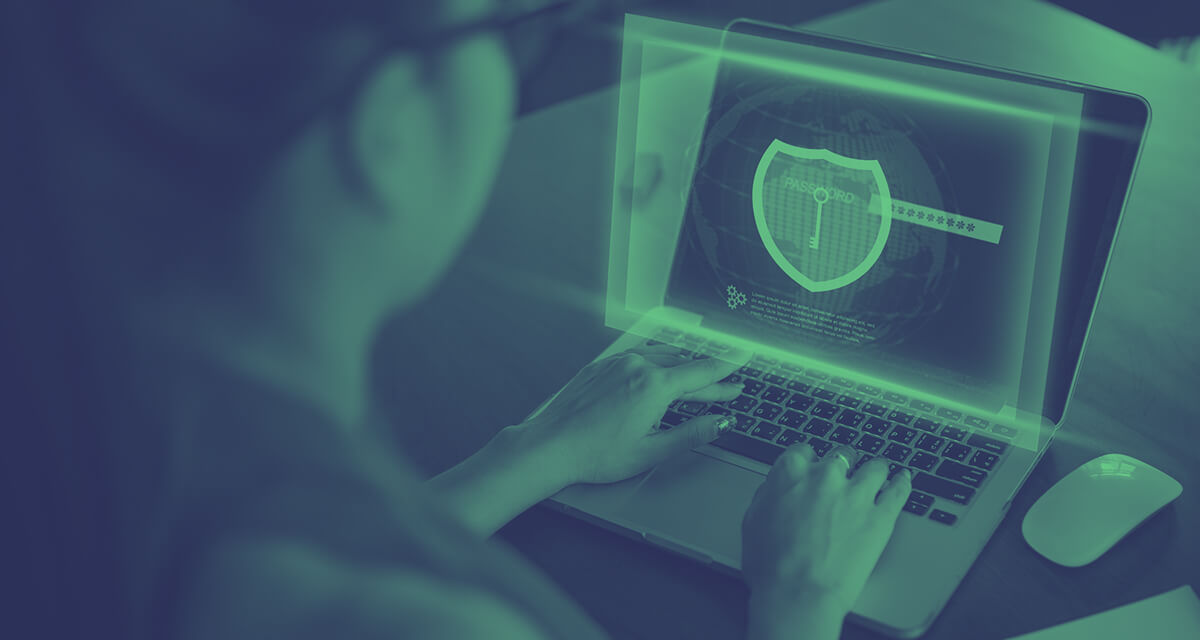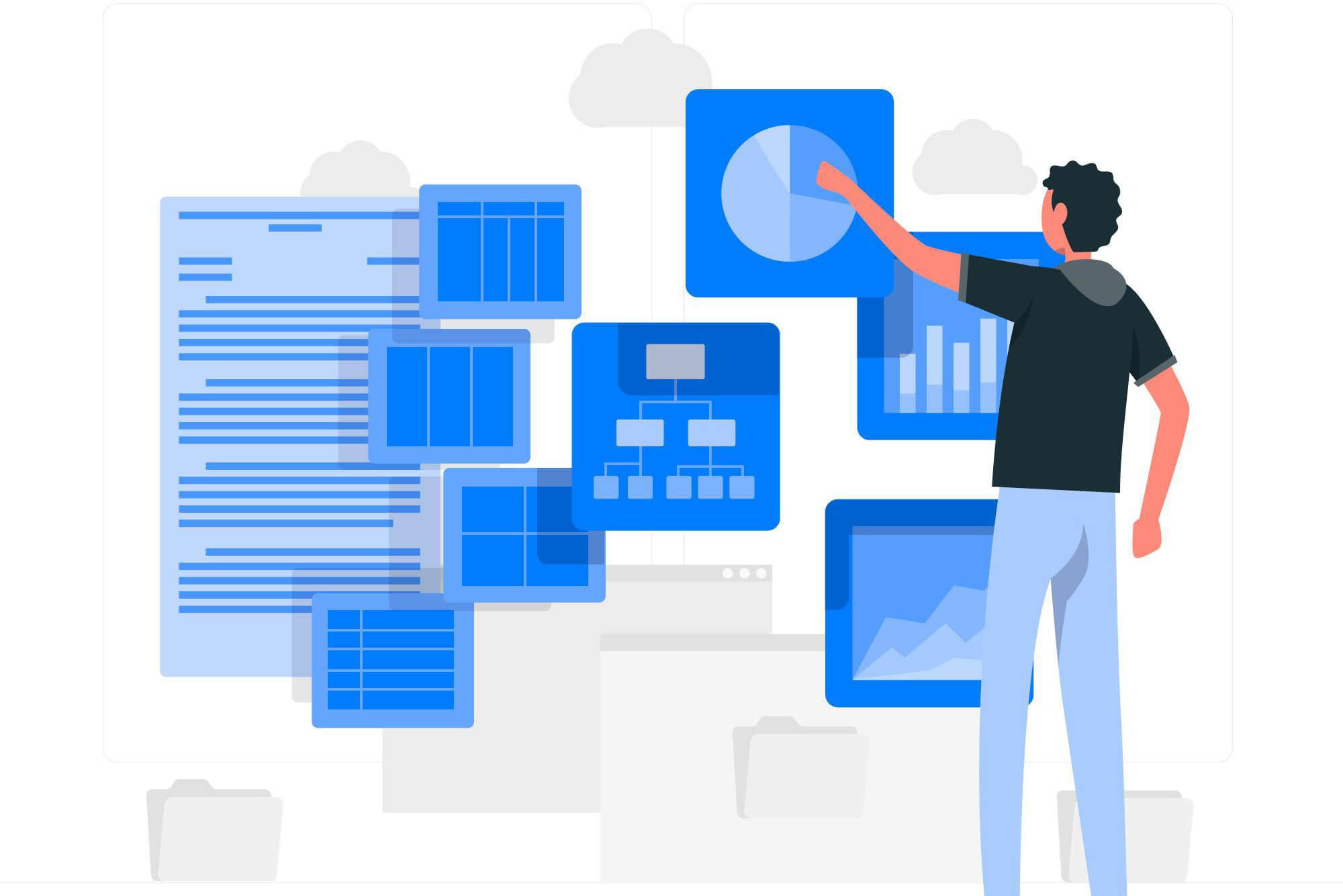Secure remote access enables remote workers to access an internal corporate network without being present onsite.
The Covid-19 pandemic caused a ton of businesses to switch to online methods of communication due to strict lockdowns.
Switching to a remote environment means companies need employees that have the skills and equipment necessary to work from home.
Tons of businesses realized how beneficial such a working environment could be. Not only do you cut down office costs, but you are also able to hire employees from all over the globe.
Even though many companies shifted to a remote working environment during the pandemic, most were unable to sustain it. The existing IT networks were not powerful enough to manage a huge load of workers.
Security breach and expansion is what needs to be worked upon to successfully run a business remotely forever. The IT department for each company also requires a cyber threat plan, constant visibility, and superb management skills. This applies to looking over employees both onsite and offsite.
Therefore, if you wish to learn more about secure remote access and remote workers to cater to your own business, you are at the right spot. In this guide, we shall look at how you can use remote access technology to your advantage and deploy a proper remote environment. Let’s get started!
What Is Remote Work Security?
Secure remote access or remote work security is a set of processes, methods, hardware, and software protocols that an IT department is supposed to keep up with to ensure data safety and prevent breaches. Cloud-hosted apps, LANs, vendors, employees, and stakeholders are allowed safe access to a company’s network no matter where they are.
This means that all employees that are not present onsite, at the company office, or at headquarters can access company resources without risks.
Is Secure Remote Access Necessary?
Yes, secure access is crucial to keep company data/resources plus important secrets safe. This includes the company’s intellectual property, employee reports, and personal/contact information.
Competitors can use a company’s data to prevent them from achieving success/goals. Secure access ensures that employees can stay connected with the company from around the world without this issue.
What Is A Secure Workforce?
The secure remote workforce includes:
- Stakeholders.
- Vendors
- Employees.
- Brand ambassadors.
- Trusted partners.
- Beneficiaries.
- Any person who works for or with the company cannot be at the office/headquarters during working times.
What Are The Technologies Used To Ensure Secure Remote Access?
As mentioned earlier, multiple software/hardware protocols, methods, and techniques must be used to create a secure network for remote employees.
Knowing about these technologies helps an organization choose the best fit based on their requirements. For example, company culture, the number of onsite/remote workers, and company size will determine which of the following technologies are most suitable:
VPN
A VPN (Virtual Private Network) helps create secure access through an encrypted channel. This tunnel is connected to an employee’s PC or other devices on a company’s IT network.
VPNs make internet connections immensely secure while also providing privacy and anonymity to users connected.
Large companies/organizations, businesses, and even government departments use a VPN to gain access to resources and LANs securely.
Even personal VPNs have started becoming popular as they not only aid anonymity but also enable privacy and data encryption.
Most virtual private networks are deployed with the company’s software or via an endpoint. They may also be launched using a clientless web browser, in which case the user needs to access the HTTP/HTTPS portal via a secure SSL/TLS encrypted connection. Popular VPNs also provide mobile or PC apps for added ease.
Web Proxy
A web proxy is often used along with SWGs (secure web gateways). Web proxies are quite popular and are used to halt direct interaction between users and the network.
A proxy generates a request and sends it to the final destination on behalf of the user. They can, therefore, provide another level of security to employees and corporate software.
Just like a VPN, web proxy traffic is also not inspected for threats or risks. They only work for web-related requests and cannot be used for data encryption for all kinds of traffic.
SASE
SASE (Secure Access Service Edge) combines network security services and WAN (Wide Area Network). Security services may be ZTNA (ZeroTrust Network Access), SWG, FWaaS, or CASB.
SASE is a security service, and WAN combined to form one cloud-based model.
SASE models for remote access move companies from hardware-based security to corporate tools, apps, and data. This allows employees to work from home, the office, or the company headquarters.
ZTNA
Zero Trust Network Access enables remote access to services/apps through proper control protocols. ZTNA does not allow all users to connect to the network by default.
Network administrators design user permissions and grant access instead. This means remote employees can only access certain parts of the network necessary to do their job.
Authenticated users can use the ZTNA service to access permitted applications and services through an encrypted channel. This tunnel ensures security by protecting IP addresses from being publicly available.
SWG
SWG (Secure Web Gateway) protects remote workers from web app threats and promotes the reinforcement of user policies.
Employees are connected to the SWG instead of directly connected to a website. The SWG is connected to the website through filtration. Before connecting, malware inspection, URL filtering, web access controls, etc., are performed.
Remote Desktop Access
Even though this method is a bit old, it is still often used to access resources/data on Local Area Networks.
Users connect to a virtual/physical PC or device on the LAN. Famous examples include the RDP (Remote Desktop Protocol) and VNC (Virtual Network Computing).
Although convenient, remote desktop access is not the recommended security measure as there are significant risks involved. Most company data is often present on 3rd party SaaS applications, so accessing data directly is a better option.
WAFs (Web Application Firewalls), DLP (Data loss prevention), and CASB (Cloud Access Security) are preferred over remote desktop access to keep application data secure.
NAC
NAC (Network Access Control) is a merger of IT methods and policies designed to keep a check on network access and device management. NAC works within the company’s network perimeters allowing only authenticated mobiles to gain access. Permissions are granted based on pre-set security rules.
The NAC strategy allows IT members to view and manage each device and monitor new connections. However, NAC is significantly less secure than other technologies used to create secure remote access.
RBI
RBI (Remote Browser Isolation) can be used in addition to SWG to provide added security against web traffic. Web content requested by the user is viewable, but the web content itself is not sent to the user’s device.
Due to the content resting in an isolated server, network security threats are eliminated.
PAM
PAM (Privileged Access Management) combines several technological methods and techniques that allow users to access various systems, processes, and apps.
All these have particular access levels, also known as privileges, that are defined as a company’s IAM strategy.
PAM distinguishes different roles within a company and allows access to tools/apps based on certain parameters.
This way, basic employees only have access to simple apps and data, whereas those on the administrative levels have further privileges/access.
PAM is particularly useful for companies requiring employees to access the organization network both offsite and onsite.
Single Sign On
SSO (Single sign-on) allows users to have access to several network apps using a single password and username.
This security approach is popular as keeping similar credentials for all logins makes life much easier.
The downside to this is that SSO is easier to gain access to by cyber attackers. Since SSO is so vulnerable, it is often used with other security methods to ensure proper and secure remote access.
Other Methods Used To Protect A Company Network
- Data encryption allows a company to store and transfer data in an unreadable form. Only users with an encryption key can gain access to the data/resources. Information is also kept safe even if it travels beyond a company’s network perimeters.
- Endpoint management ensures that users have visibility and control over various devices connected to a company network. Besides monitoring devices connected remotely, it also helps ensure that security protocols are applied/followed at every end.
- Testing and monitoring for malicious activity is another way to keep data safe from any potential threats or breaches. This way, any breaches can be countered and eradicated long before they happen. Testing user systems regularly further helps eliminate risks.
- All employees should be taught about tools, technologies, and methods to work remotely to keep a company network secure.
- All remote workers must be briefed regarding company policies, methods, and remote job rules. They should be able to make use of personal devices, PCs, and social media carefully.
- Practical training and teaching about potential security threats like social engineering risks, phishing, and ensuring video calls are connected safely is a must for workers.
- Appreciate employees who practice responsible security behavior to encourage others. An example is making use of multi-factor authentication.
How To Ensure Remote Work Safety?
To ensure remote work safety, it is necessary to acknowledge and understand the risks involved. This may sound like a basic plan, but it is the base for most security methods and technologies.
Companies that fail to understand that their network is at stake by not using security technologies are at greater risk than those that do.
Being online at an office system is vastly different from being online at the enterprise network at home. Even though the experience is the same, remote access poses many more threats than onsite usage.
To ensure secure remote access, it is a must to take care of the following:
-
- All users that have access to a company’s network must have separate accounts and login credentials with multi-factor authentication.
- Home network security should be encouraged by teaching employees about networks and WiFi routers. An example is updating credentials for popular routers.
- Practice a company culture that allows employees to report misplaced data/emails, missing devices, and other information. They should also be able to communicate about any other issues they might be facing.
- Enable healthy communication between staff members and check on them for regular updates regarding potential risks, updates, and best practices.
What Are Some Threats To Secure Access?
Let’s look at cybersecurity threats that a company’s network may be prone to:
Poor Password Strength
Passwords are necessary for account security and can ward off cyber attacks. Therefore, password creation and management play a huge role and are something that can cause the compromise of entire company data.
Often employees recycle passwords that are easy to remember causing data to become more prone to leaks and theft. If they use similar passwords for both personal and company accounts, their own and company data come under fire.
Email interception and breaches become even easier due to web apps and SaaS usage.
Phishing Attacks
Phishing attacks are not sharp, but they are often precise. Cybercriminals use phishing to extract login credentials for email IDs and chat accounts.
Phishing attacks often appear as emails with prize scams and urgent notices.
Links in these emails cause a page to open up, which causes data to be compromised. Attackers may also use a VPN to move through the network to cause more damage.
Direct And Insecure Access
Using VPNs on a WAN causes performance and loading speed to drop. Remote employees often start looking for alternatives that are less secure in the long run.
All VPNs may not be the most secure, but not using these puts remote users at further risk.
Data breaches include leakage of sensitive company information, ransomware campaigns, and malware infections due to direct and insecure access to web apps and SaaS.
Unmonitored Device Access
Companies must allow only trusted devices access to the network. Even PCs present onsite should have VPNs and other technologies to prevent data breaches.
Since remote workers use PCs, laptops, and smartphones from anywhere, securing remote workers becomes harder.
To solve this issue, companies should ask employees to make use of a virtual private network and keep their software updated and their systems free from malware/viruses.
Apart from this, only authorized devices should be used to sign in to the company network, and other preventive methods should be used to encrypt data and ward off cyberattacks.
Advantages Of Secure Remote Access
Using remote access strategies, cybersecurity professionals/security teams can keep an organization secure in 3 simple ways:
Safe Web Surfing
Popular browsers like Google Chrome offer a certain amount of security against web traffic. However, a proper remote access plan is still necessary for a smooth and safe browsing experience. Proper plans reduce malware threats and network security compromises.
Awareness
Creating awareness amongst employees regarding security measures is a huge challenge for most companies. A secure remote access strategy allows a company to simplify security processes while educating employees about new updates, security threats, data safety, and other operations.
Any Device Can Be Connected To The Company Network
A secure remote access plan allows professionals in the IT department to manage and monitor device connections. This enables mobile phones, laptops, or any device using the IoT to be safely connected to a company’s network and make use of dedicated corporate apps.
Conclusion
Secure remote access solution allows companies to ensure network security. Cybersecurity professionals must, however, keep the company size, number of employees, and culture in mind to define the correct corporate parameters and provide secure access.
Since remote jobs are becoming popular by the day, developing an effective and secure remote access strategy is necessary. This allows the company to expand and get employees that can work from anywhere around the globe without compromising company data/secrets.






